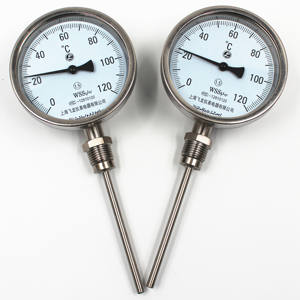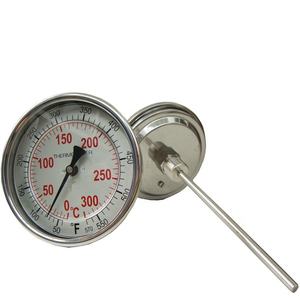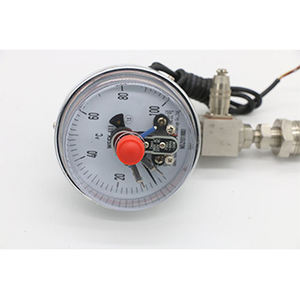Electronic Components Supplier | Transformers, Inductors, Inverters
PRODUCT PARAMETERS
Description
Overview of Industrial Thermometers Digital Infrared Red Thermometer
Industrial Thermometers Digital Infrared Red Thermometer is used to monitor the temperature during industrial production processes, which are crucial for equipment operation, product quality, and production safety. There are various types, such as thermal resistance thermometers, thermocouple thermometers, infrared thermometers, optical thermometers, etc., each with its advantages, disadvantages, and applicable ranges, which need to be selected according to specific usage environments and measurement requirements. Regularly inspect and calibrate to ensure accuracy and reliability, providing reliable temperature measurement data for industrial production. Choosing and using industrial thermometers correctly can ensure the smooth progress of the industrial output.
Characteristics of Industrial Thermometers Digital Infrared Red Thermometer
High precision measurement: It usually has a high-precision temperature measurement function, which can accurately measure and display temperature values. This is thanks to the use of precision temperature sensors and measurement circuits.
Wide temperature range: able to adapt to a wide range of temperatures and measure and control industrial processes from extremely low to high temperatures. Different models of temperature controllers may have different temperature ranges, and users can choose the appropriate model according to their specific needs.
Multiple control modes: Usually supports multiple control modes, such as proportional control, PID control, fuzzy control, etc. These control modes can be selected and adjusted according to actual needs to achieve precise temperature control and stability.
Multiple output modes: With multiple output modes for communication and control with other devices or systems. Common output methods include analog output (such as current or voltage signals), digital output (such as RS485 communication interface), and relay output.
Large screen display: Provided with a large screen display, it can clearly display the current temperature, set temperature, and other related information. This allows users to visually monitor temperature changes and device status, making it convenient to operate and adjust parameters.
Strong anti-interference ability: There are often various sources of interference in industrial environments, such as electromagnetic interference, vibration, and temperature fluctuations. Industrial thermometers usually have strong anti-interference ability, and anti-interference design and filtering algorithms are adopted to reduce the impact of interference on temperature measurement and control.
Programmable function: With programmable function, users can customize settings and operations according to their needs. Users can set temperature curves, time control, and alarm functions through the programming interface to meet the needs of complex industrial processes.
Security protection function: usually has multiple security protection functions to ensure the safety of equipment and processes. For example, it can have functions such as over temperature protection, power outage memory, and fault alarm to prevent timely measures from being taken in case of temperature exceeding the safe range or equipment failure.
Easy installation: Industrial thermometers can be installed in various ways, such as axial, radial, and universal, making it convenient for users to use.
Good durability and reliability: Industrial thermometers are usually made of high-quality materials and processes, which have good durability and reliability and can work stably for a long time.”
Specification of Industrial Thermometers Digital Infrared Red Thermometer
This commercial electronic infrared thermostat measures temperature quickly without touching anything. Factor it at a surface, shoot, and obtain the reading quickly. It’s perfect for examining warm equipment, electric panels, pipes, or relocating components securely.
The measurement array is vast. It normally reads from -50 ° C to 550 ° C(-58 ° F to 1022 ° F). This covers most commercial needs. Accuracy issues. Expect analyses within ± 1.5% or ± 1.5 ° C(± 2.7 ° F ). This depends on the specific version and problems. Always inspect the specifications for precise figures.
The distance-to-spot proportion is essential. A common ratio is 12:1. This indicates from 12 inches away, it gauges a 1-inch diameter area. Stand farther away, the determined location gets bigger. Know this to target tiny locations properly. Emissivity settings are adjustable. Various materials emit heat in different ways. Adjusting emissivity (typically 0.10 to 1.00) guarantees appropriate analyses on glossy steel, painted surface areas, or rubber.
The large LCD display is backlit. It reveals the temperature plainly. Readings remain in Celsius or Fahrenheit. The laser tip assists intend precisely at the target spot. The unit is developed challenging. It often has a sturdy housing for workshop or manufacturing facility usage. Battery life is typically good. It works on typical batteries.
Data logging is occasionally available. Some designs keep several readings. This is useful for tracking temperature adjustments in time. The system is very easy to make use of. It calls for minimal training. Workers can quickly check equipment for hotspots or validate process temperature levels. It enhances safety and effectiveness.
Applications of Industrial Thermometers Digital Infrared Red Thermometer
Industrial infrared thermostats are essential devices across several markets. Workers use them for quickly, secure temperature level checks without touching warm or hazardous devices. Electric specialists check panels, breakers, and links. Locating locations rapidly assists protect against expensive failings and fires. Motors, pumps, and bearings get checked frequently. Overheated components waste power and signal upcoming failures. Finding a rise in temperature early protects against costly damages and downtime.
Building assessors rely greatly on these tools. They discover missing insulation in walls and ceilings fast. Drafts around windows and doors come to be noticeable with a thermal scan. Dampness trapped behind surface areas causes concealed damages. Infrared thermometers disclose these damp, cooler areas prior to significant troubles start. Checking roof coverings for leaks is another typical job. Cooling and heating service technicians depend upon these devices daily. They validate air vent temperature levels for proper cooling and heating. Inspecting ductwork for leaks or blockages is easy. Maintenance heating systems and central heating boilers requires exact surface analyses. Refrigeration systems require consistent temperature level tracking on pipelines and parts.
Food handling plants have rigorous security rules. Workers frequently inspect temperatures of saved food and components. Cooking surface areas and holding equipment must stay within safe arrays. Chilled and frozen goods need keeping track of too. The non-contact method keeps points hygienic. Finding potential issues early prevents spoilage and wellness risks. Maintenance teams in manufacturing facilities use them regularly. They keep track of machinery wellness during operation. Conveyor systems, gearboxes, and hydraulic devices require viewing. Process temperatures in chemical plants or manufacturing lines call for checking. This easy device gives immediate data for important decisions.
Company Profile
PDDN Photoelectron Technology Co., Ltd. is one of the leading enterprises in power electronics technology and power products, which is fully involved in developing solar inverters, transformers, voltage regulators, distribution cabinets, thyristors, modules, diodes, heaters, and other electronic devices or semiconductors. We will be committed to providing users with high-quality, efficient products and considerate service.
It accepts payment via Credit Card, T/T, West Union, and Paypal. PDDN will ship the goods to customers overseas through FedEx, DHL, by sea, or by air. If you want high-quality Industrial Thermometers Digital Infrared Red Thermometer, please send us inquiries; we will be here to help you.
Payment Methods
L/C, T/T, Western Union, Paypal, Credit Card etc.
Shipment
By sea, by air, by express, as customers request.
Storage Conditions
1) Store in a dry environment at room temperature.
2) Avoid damp and high temperature.
3) Use immediately after opening the inner packing bag.
5 FAQs of Industrial Thermometers Digital Infrared Red Thermometer
What exactly is this thermometer?
It’s a handheld tool. It measures surface temperatures from a distance. You don’t need to touch anything. It uses infrared light. It shows the temperature number on a digital screen.
How accurate is the reading?
Accuracy depends on the model. Good industrial models are usually within ±1% or ±1°C. Read the specs for your specific tool. Calibrate it regularly. This keeps it accurate for critical jobs.
Does distance matter?
Yes, distance matters a lot. Every model has a “distance-to-spot ratio”. A 10:1 ratio means measuring 1 foot away gives a reading for a 1-inch spot. Get closer for smaller targets. Stand too far away, the reading covers too big an area. It might be wrong.
Can it measure any surface?
Most surfaces work fine. But shiny or polished metals are tricky. They reflect infrared light. This can mess up the reading. Aim for a dull surface. Use special tape if you must measure shiny metal. It gives a better reading.
What temperatures can it handle?
Industrial models handle very hot or cold things. Typical ranges are -50°C to 1000°C or wider. Check your thermometer’s maximum and minimum ratings. Don’t exceed them. It protects the tool. It keeps readings safe.
REQUEST A QUOTE
RELATED PRODUCTS

Cheap Industrial Digital Temperature Stainless Steel Bimetallic Thermometer

1-16 Channels Data Logger Paperless Recorder For Temperature Humidity Pressure Voltage Current Real Time



